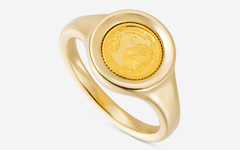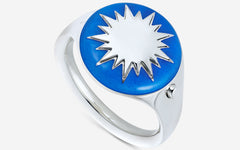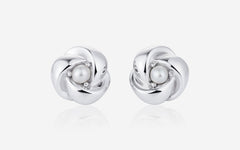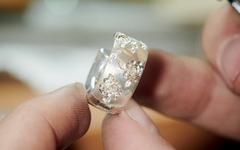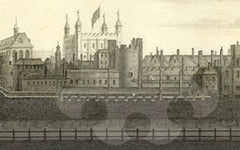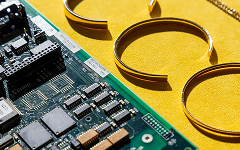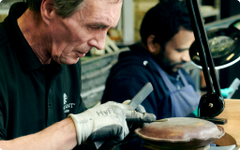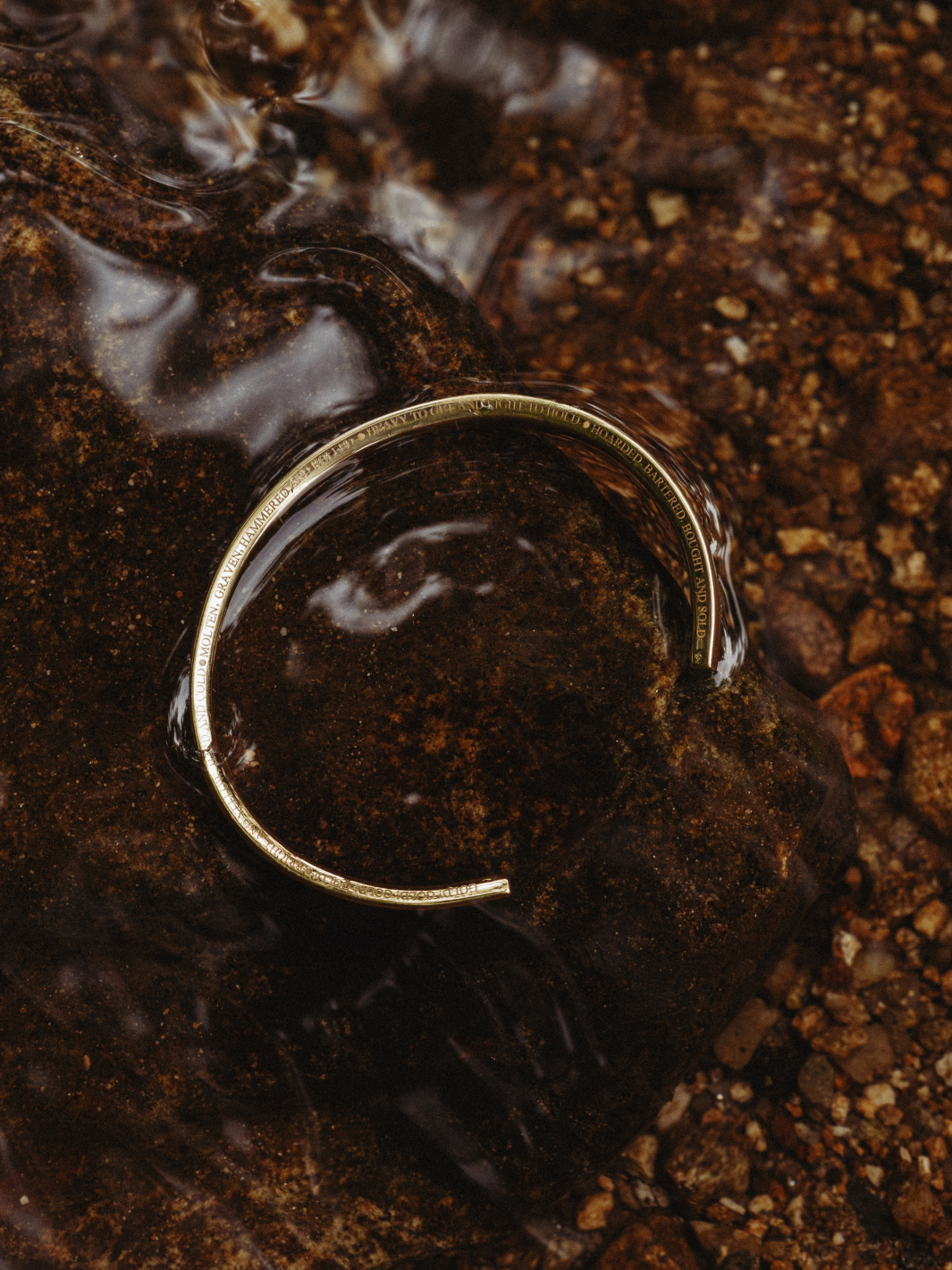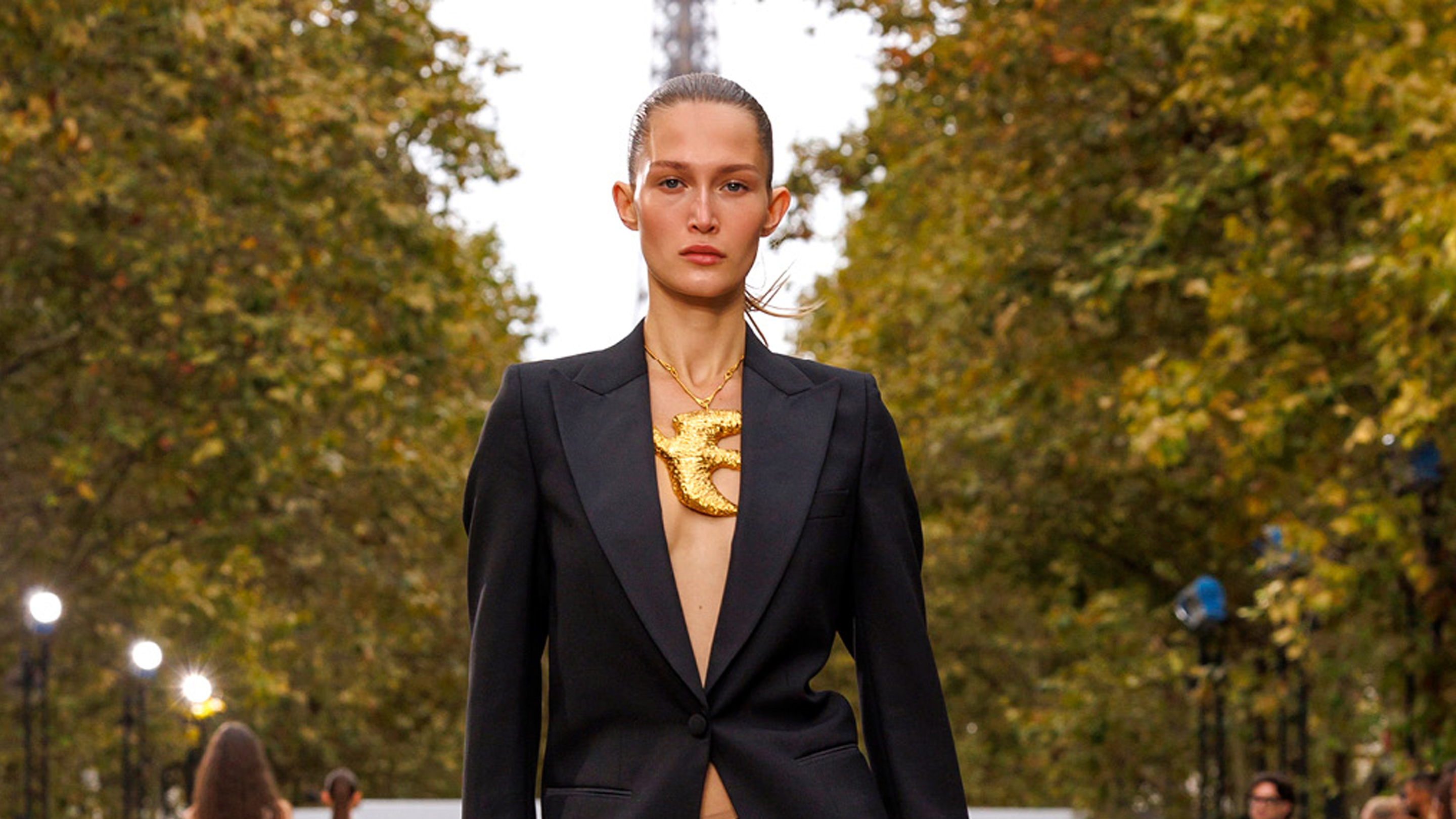This month we meet Louis Morlæ, a graduate of the Royal Academy Schools in London, whose practice utilizes digital rendering, design and manufacturing processes to produce sculpture, video and installation. Creative Director Dominic Jones recently worked with Morlæ on an organic collaboration to create an x-ray silver spinning top which featured in his graduate exhibition, as part of an ongoing commitment to supporting emerging creatives using precious metals by 886 by The Royal Mint.

Louis outside the Royal Academy
We join Louis at The Royal Academy Schools, in discussion with Dominic Jones, Creative Director of 886 by The Royal Mint.
Dominic Jones: Can you tell us about your graduate exhibition?
Louis Morlæ: The show is broken up into two parts. There's a digital animation on one side of the room, and on the other side are four sculptural works. The animation, titled ‘Ekstasia & 6 Last Things’ sets out an end-of-world scenario in which the camera follows objects through a series of levels, down a trail of entropy from global communications to luxury objects, which culminates in a convergence of these objects at the edge of the universe.
The climax of the video is a robot barn dance at a car-henge, in which the main characters are basking in a euphoric moment in their utopia. The work, though engaging with fairly dystopian topics, is supposed to feel optimistic. The narrative of the work frames “the end” as something transcendent when viewed through a non-human perspective. Presented on a pill-shaped screen the video plane functions a bit like a window, turning the exhibition space into a vehicle, almost as if we’re passengers, watching the gallery drive towards the story through a windscreen.

Louis Morlæ's Exhibition Animation titled ‘Ekstasia & 6 Last Things’
On the other side of the space, there are four sculptural works which aim to set out the world that exists beyond the frame of the animation. Once I'd completed the video I was thinking about what kind of objects might be created out of the terms of its universe. How sculptural forms might proliferate and create their own ecosystems, become self-generative or be in communication with each other. It was nice to play with the idea that an undescribed ecology exists beyond the walls of the exhibition space.
DJ: What is the process behind your work?
LM: I work a lot on the computer and use a suite of design and engineering software to produce the sculptures. I spend a lot of time in Solidworks which is the industry standard for product designers and engineers and it’s used to design components on planes or cars. In that way the tools I use are in dialogue with high technology objects or luxury consumer goods. Once I've produced the forms physically, I tend to implement them into animations, which brings them to life in my digital worlds.

The Spinner - Made from X-Ray Silver
DJ: How have you found your experience at The Royal Academy Schools?
LM: The Royal Academy Schools is an extremely unique educational experience. It's the only three-year postgraduate course in the UK that offers free studio and bursary support. This allows every student to input the amount of time and give their practice the kind of focus that allows development. The whole school is quite small so you get to know everyone's practices, but also you learn about how other people form their own works and the difference between each student. It allows a bit of space for navigating the broad spectrum of emerging art practice.
DJ: We are speaking at the School, how has the environment affected your work?
LM: The building we’re in has been used by the Royal Academy Schools for around 150 years and you can really feel it, especially where my exhibition space is - in the heart of both Burlington House and Burlington Gardens at the end of a crypt-like corridor. In response to the aged feel of the building I wanted to play with time within the show. It's a very bizarre setting to engage with contemporary art practice because it’s so old, there's so much history in the space. I think that pairing is something that's really exciting, especially in the way that I work. With this show I've been thinking about how histories can produce futures, how there can be a push and pull of time when thinking speculatively.

Louis and his artwork.
DJ: Tell us about how your work has evolved.
LM: Before I came to the Royal Academy, I primarily worked in ceramics and latex, I was more interested in a traditional sculptural practice. I feel like there is that element still functioning within my work and it is important to me.
That being said, the way I work now is more interested in the horizon of the future and it’s nice to be able to pair the two together. I enjoy considering the structures of my realities. We move around Victorian homes and buildings, but we carry iPhones and Apple products. What’s interesting is that dissonance between past and present isn't necessarily apparent, things kind of just make sense.
DJ: What interested you in the collaboration with 886 by The Royal Mint?
LM: I had made a few coin forms when 886 approached me, so the idea of making one with the Royal Mint, which has produced coins for over a thousand years, was something that really excited me.
I like the idea of the coin being a validating token or something that suggests realness, a form of authentication. If you see something minted, you know that thing existed, you know that person or object, or any sort of symbolic thing was something real or significant at the time.
The coin made for the show acts as a way of bringing the world towards the work. It bridges the gap between our material reality and the reality I'm creating in the gallery.

Louis Morlæ with the X-Ray Silver Spinner
DJ: We have collaborated on the creation of a Spinning Top, which appeared in your exhibition, what interested you most in the creative process?
LM: The spinning top was made using recycled silver from X-rays, and there's something really nice about that as an idea, taking a high-technology object and then repurposing it into something that is rooted in material value.
Although those x-rays are now outdated and have been stripped and the materials repurposed, the object that it was still has a life in a new form. Something recycled and repurposed is imbued with history and energy, whether it's seen or unseen.

The X-Ray Silver Spinner
For more information about Louis Morlæ’s work please contact info@roseeaston.com
Follow Louis Morlæ Louis Morlæ (@rokos_basilixx) • Instagram photos and videos>
